Dealing with an aggressive dog can be challenging, stressful, and sometimes frightening. However, with the right training techniques and understanding, it is possible to manage and even transform aggressive behaviors in dogs. This comprehensive guide covers everything you need to know about dog behavior training for aggression, from understanding the root causes to implementing effective strategies.
Understanding Dog Aggression
Types of Aggression
Dog aggression can manifest in various forms, each requiring a unique approach to management and training. Common types include territorial aggression, where a dog aggressively protects its space; protective aggression, aimed at defending its owners; and fear-based aggression, which is a defensive reaction to perceived threats. Recognizing the type of aggression your dog displays is crucial for implementing effective training strategies.
Causes of Aggression
Understanding the root causes of aggression in dogs is essential for addressing the behavior. Causes can range from genetic predispositions and early life experiences to environmental factors and health issues. For instance, a dog that was not properly socialized during its critical developmental period may exhibit fear-based aggression. Similarly, medical conditions such as hypothyroidism or pain from an injury can trigger aggressive responses.
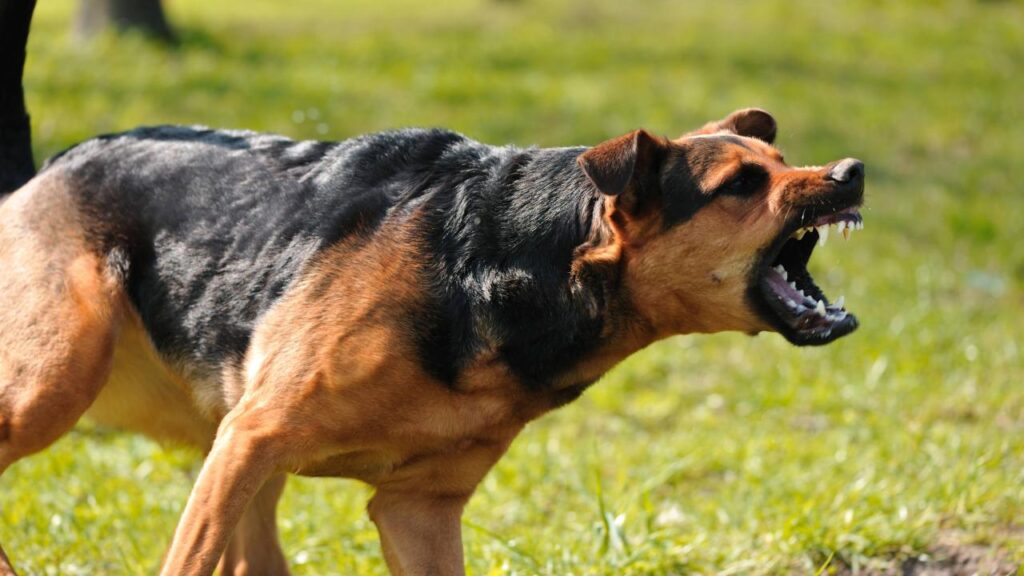
Signs of Aggression
Identifying the signs of aggression early can prevent escalation. Common signs include growling, baring teeth, stiff body posture, and intense staring. Subtle signs such as lip licking, yawning, and avoiding eye contact can also indicate that a dog is feeling uncomfortable or threatened. By understanding these signals, you can take proactive steps to manage and train your dog effectively.
Assessing Your Dog’s Behavior
Behavioral Assessments
Conducting a thorough behavioral assessment is the first step in addressing aggression. This involves observing your dog in various situations to identify triggers and patterns. Note how your dog reacts to different stimuli, such as strangers, other animals, or specific environments. Documenting these observations will help in developing a targeted training plan.
Professional Evaluations
Sometimes, seeking the expertise of a professional behaviorist or trainer is necessary. These professionals can conduct in-depth evaluations to understand the nuances of your dog’s behavior. They use specialized techniques and tools to assess aggression and provide tailored recommendations for training and management.
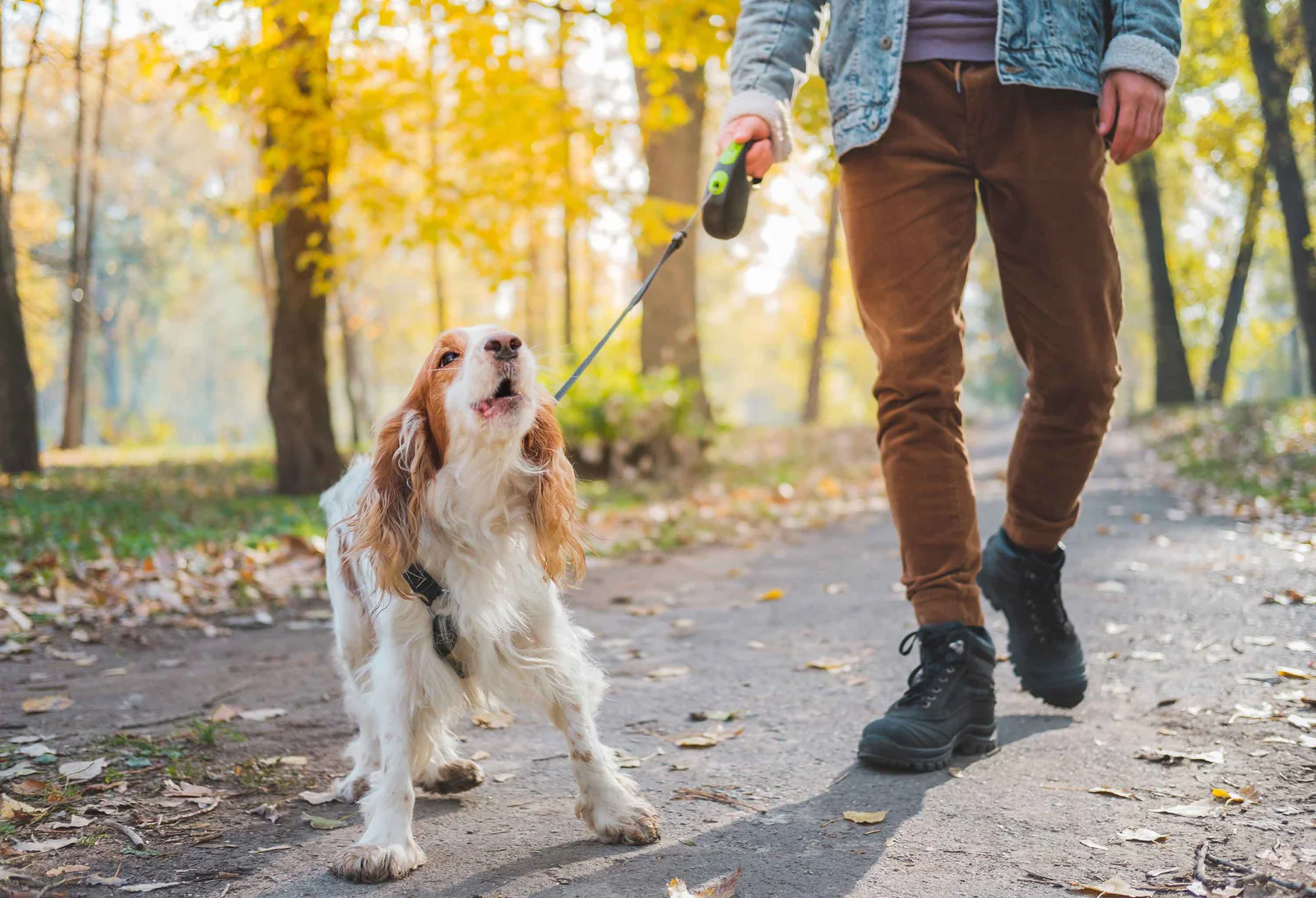
Identifying Triggers
Understanding what triggers your dog’s aggression is key to managing it. Triggers can be specific people, animals, situations, or even certain sounds or objects. Once you identify these triggers, you can work on desensitizing your dog to them through controlled exposure and positive reinforcement, gradually reducing their aggressive reactions.
Establishing Leadership
Importance of Leadership
Dogs thrive in environments where they understand their role and look up to a strong, consistent leader. Establishing yourself as the leader helps your dog feel secure and reduces anxiety-driven aggression. Leadership is not about dominance; it’s about guiding and communicating with your dog effectively.
Techniques to Establish Leadership
Consistency is key in establishing leadership. Use clear commands, maintain a calm demeanor, and set boundaries. Implement routines and structure in your dog’s daily life. Training exercises like sit, stay, and come help reinforce your role as the leader. Always reward positive behavior to encourage cooperation and trust.
Consistency in Training
Consistency in training ensures that your dog understands and adheres to the rules. Inconsistent training can confuse your dog and exacerbate aggressive behaviors. Establish a daily training routine and involve all family members to ensure everyone is on the same page with commands and expectations.
Positive Reinforcement Training
Basics of Positive Reinforcement
Positive reinforcement training focuses on rewarding desired behaviors to encourage their repetition. This method is highly effective for managing aggression as it promotes a positive association with non-aggressive behaviors. Rewards can include treats, praise, or playtime.
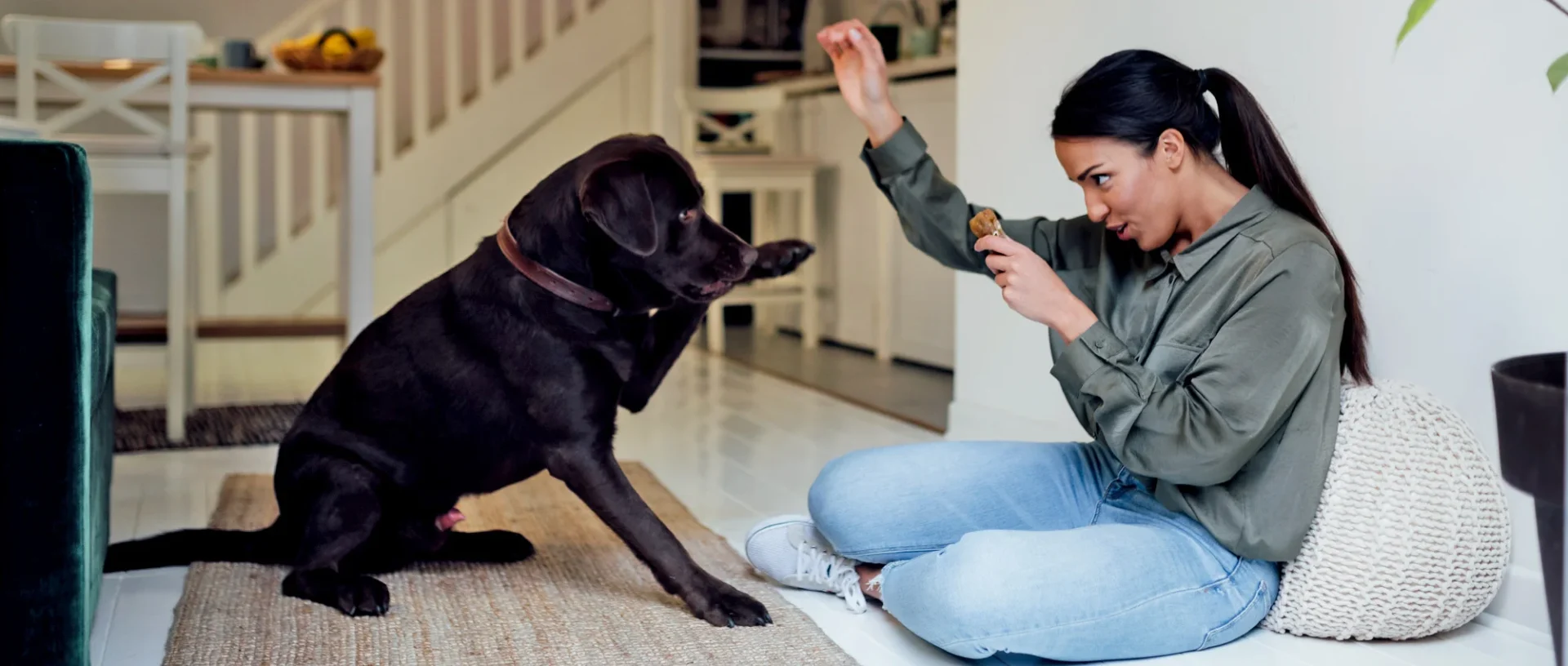
Effective Techniques
Timing is crucial in positive reinforcement. Reward your dog immediately after the desired behavior to reinforce the connection. Use high-value treats that your dog finds irresistible. Gradually increase the difficulty of training exercises, ensuring your dog succeeds at each step before moving on.
Benefits of Positive Reinforcement
Positive reinforcement builds a strong bond between you and your dog, based on trust and respect. It reduces fear and anxiety, common triggers for aggression. This method also encourages your dog to think and make positive choices, leading to long-term behavioral improvements.
Desensitization and Counter-Conditioning
Understanding Desensitization
Desensitization involves exposing your dog to a trigger at a low intensity and gradually increasing it as your dog becomes more comfortable. This process helps reduce the fear or anxiety associated with the trigger, diminishing aggressive responses over time.
Steps to Implement Counter-Conditioning
Counter-conditioning pairs the presence of a trigger with something positive, such as treats or praise. For example, if your dog is aggressive towards other dogs, start by rewarding calm behavior when another dog is at a distance. Gradually decrease the distance while continuing to reward positive behavior.
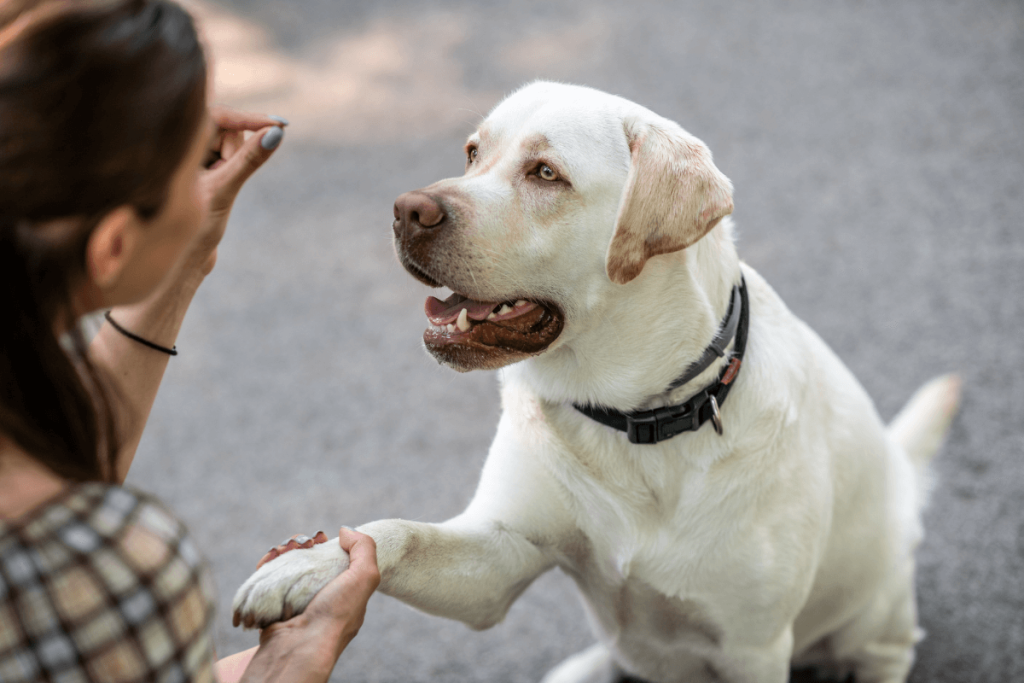
Examples and Case Studies
Case studies highlight the effectiveness of these methods. One example is a dog that showed fear-based aggression towards strangers. Through gradual exposure and positive reinforcement, the dog learned to associate strangers with treats and praise, significantly reducing its aggressive behavior.
Socialization Techniques
Importance of Socialization
Proper socialization is crucial in preventing and managing aggression. It involves exposing your dog to a variety of people, animals, environments, and experiences in a controlled and positive manner. Well-socialized dogs are less likely to react aggressively out of fear or uncertainty.
Controlled Socialization Exercises
Start socialization in a controlled setting, ensuring that your dog feels safe and comfortable. Introduce new experiences gradually and always associate them with positive outcomes, such as treats or play. Monitor your dog’s reactions and adjust the intensity of the exposure accordingly.
Gradual Exposure Methods
Gradual exposure helps build your dog’s confidence. Begin with low-intensity situations and slowly increase the complexity. For instance, if your dog is nervous around other dogs, start with brief, distanced encounters and gradually reduce the distance as your dog becomes more relaxed.
Managing Environmental Factors
Creating a Safe Environment
A safe and secure environment can significantly reduce aggression. Ensure that your dog’s living space is free from stressors and provides comfort. Designate a quiet area where your dog can retreat when feeling overwhelmed.
Reducing Stressors
Identify and minimize environmental stressors that may trigger aggression. This can include loud noises, unfamiliar visitors, or chaotic household activities. Providing a consistent and calm environment helps your dog feel more secure and less prone to aggressive reactions.
Tools and Equipment
Using the right tools and equipment can aid in managing aggressive behaviors. Muzzles, harnesses, and crates can provide safety and control during training sessions. Ensure that any equipment used is comfortable and does not cause additional stress to your dog.
Using Professional Help
When to Seek Professional Help
If your dog’s aggression is severe or persistent, seeking professional help is essential. A certified dog behaviorist or trainer can provide expert guidance and develop a customized training plan. They can also offer insights into underlying issues that may be contributing to the aggression.
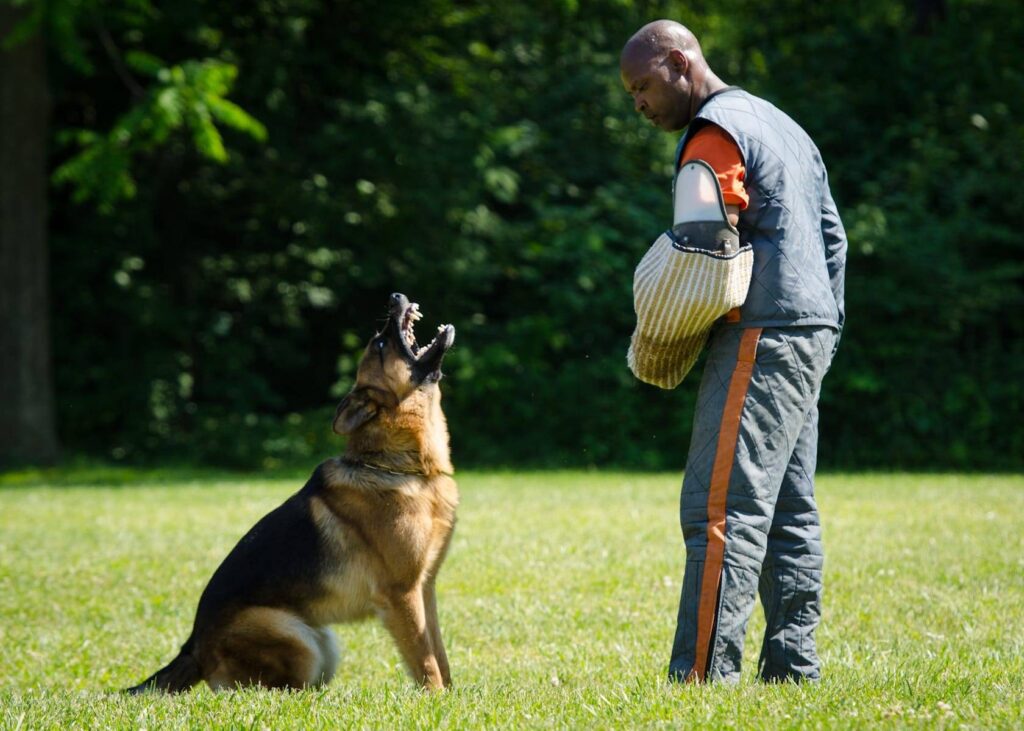
Types of Professionals
Different professionals specialize in various aspects of dog behavior. A certified dog trainer focuses on obedience and general behavior modification, while a veterinary behaviorist can address medical or psychological issues contributing to aggression. Choose a professional with relevant experience and credentials.
What to Expect from Professional Training
Professional training involves a thorough assessment, personalized training plan, and ongoing support. The trainer will work with you and your dog to address specific behaviors, provide hands-on training, and offer advice on maintaining progress. Consistent follow-up sessions ensure lasting results.
Consistency in Training
Importance of Consistency
Consistency is crucial in training aggressive dogs. It reinforces learned behaviors and prevents confusion. Regular training sessions, clear commands, and consistent rewards help your dog understand expectations and build trust in the training process.
Daily Training Routines
Incorporate training into your daily routine. Short, frequent sessions are more effective than occasional, lengthy ones. Use everyday situations as training opportunities, reinforcing positive behaviors and addressing aggression as it arises.
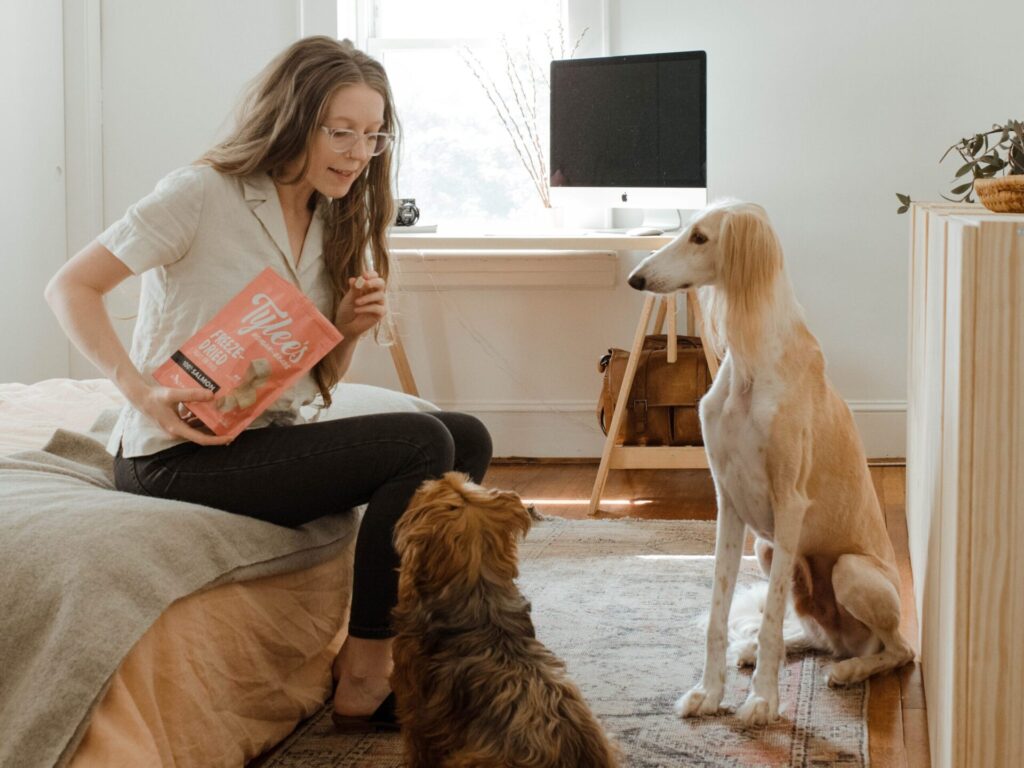
Involving Family Members
Ensure that all family members are involved in the training process and follow the same rules and commands. Consistent communication and cooperation among household members prevent mixed signals and reinforce the training’s effectiveness.
Preventing Aggression in Puppies
Early Training Techniques
Early training is crucial in preventing aggressive behaviors in puppies. Focus on basic obedience commands, socialization, and positive reinforcement. Expose puppies to various environments, people, and animals to build their confidence and reduce fear-based reactions.
Socialization for Puppies
Puppy socialization should begin early and be a continuous process. Introduce puppies to different stimuli in a controlled and positive manner. Encourage positive interactions and use treats and praise to reinforce good behavior.
Building Positive Behaviors
Focus on building positive behaviors from a young age. Teach puppies appropriate play, how to greet people calmly, and how to interact with other dogs. Consistently reward positive behaviors to encourage their repetition and prevent the development of aggressive tendencies.
Recognizing Fear-Based Aggression
Signs of Fear-Based Aggression
Fear-based aggression is often misunderstood as dominance. Recognizing signs such as cowering, tail tucking, and avoiding eye contact can help you address the underlying fear rather than punishing the aggressive behavior. Understanding these signs allows for more effective training approaches.
Addressing Fear
To address fear, use desensitization and counter-conditioning techniques. Gradually expose your dog to the feared stimulus while pairing it with positive experiences. This helps your dog form new, positive associations and reduces the fear response over time.
Building Confidence in Your Dog
Building your dog’s confidence is essential in managing fear-based aggression. Engage in activities that your dog enjoys and excels at, providing opportunities for success and positive reinforcement. Confidence-building exercises can significantly reduce fear and associated aggressive behaviors.
Health and Wellness Factors
Impact of Health on Behavior
A dog’s health can directly impact its behavior. Pain, illness, or discomfort can trigger aggression. Regular veterinary check-ups are essential to rule out any medical issues that may be contributing to aggressive behavior.
Regular Vet Check-Ups
Routine veterinary visits help identify and address health issues early. Discuss any behavioral changes with your vet, as these can often be linked to underlying medical conditions. A healthy dog is more likely to respond positively to training and behavior modification.
Nutrition and Exercise
Proper nutrition and regular exercise are vital for your dog’s overall well-being. A balanced diet supports physical health, while exercise helps reduce stress and pent-up energy that can lead to aggression. Ensure your dog receives adequate physical and mental stimulation daily.
Training Tools and Equipment
Choosing the Right Tools
Selecting appropriate training tools is crucial for safety and effectiveness. Tools such as harnesses, leashes, and muzzles should be comfortable and fit properly. Avoid using tools that cause pain or fear, as these can exacerbate aggressive behaviors.
Safe Use of Equipment
Ensure that all training equipment is used safely and correctly. For example, muzzles should allow your dog to pant and drink water. Always supervise your dog when using training tools to prevent accidents or discomfort.
Avoiding Harmful Tools
Avoid using tools that can harm or instill fear in your dog, such as shock collars or choke chains. These tools can increase anxiety and aggression. Focus on positive reinforcement methods that promote trust and cooperation.
Reward-Based Training Methods
Types of Rewards
Rewards in dog training can include treats, toys, praise, and playtime. Identify what motivates your dog the most and use it as a reward for desired behaviors. Variety in rewards can keep training sessions engaging and effective.
Implementing Reward-Based Training
Start with basic commands and immediately reward positive responses. Gradually increase the complexity of tasks while ensuring your dog understands each step before moving on. Consistency in rewarding desired behaviors reinforces learning and encourages repetition.
Avoiding Common Mistakes
Common mistakes in reward-based training include inconsistency and overuse of treats. Ensure that rewards are timely and directly linked to the behavior you want to reinforce. Avoid using treats as bribes and focus on rewarding after the behavior is performed correctly.
Building Trust and Bonding
Importance of Trust
Trust is the foundation of any successful training program. A dog that trusts its owner is more likely to follow commands and exhibit positive behaviors. Building trust involves consistent, positive interactions and avoiding harsh or punitive measures.
Activities to Strengthen Bond
Engage in activities that you and your dog enjoy together, such as playing fetch, hiking, or simply spending quality time. Training sessions that are fun and rewarding for your dog also help strengthen your bond and build mutual trust.
Trust-Building Exercises
Exercises like hand feeding, gentle grooming, and obedience training can build trust. Ensuring that your dog feels safe and secure during these activities reinforces positive associations and strengthens your relationship.
Avoiding Punishment-Based Methods
Dangers of Punishment
Punishment-based methods can increase fear and aggression in dogs. Harsh corrections, yelling, or physical punishment can damage your relationship with your dog and lead to more severe behavioral issues.
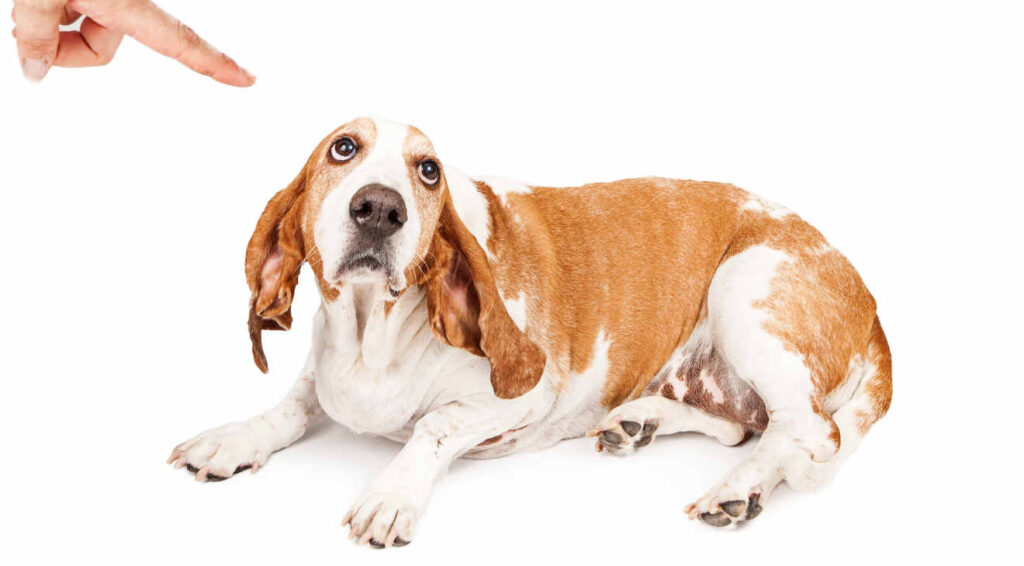
Alternatives to Punishment
Focus on positive reinforcement and behavior modification techniques instead of punishment. Redirect unwanted behaviors and reward positive actions. Use calm and consistent communication to guide your dog towards appropriate behaviors.
Long-Term Effects of Positive Methods
Positive training methods foster a trusting, cooperative relationship between you and your dog. Over time, these methods lead to more stable, well-adjusted behavior and a deeper bond. Positive training sets the stage for long-term success and happiness for both you and your dog.
Addressing Specific Types of Aggression
Territorial Aggression
Territorial aggression occurs when a dog defends its perceived territory from intruders. Training techniques for this type of aggression include desensitization to visitors and positive reinforcement for calm behavior when someone enters the home.
Protective Aggression
Protective aggression involves a dog defending its owner or family members. To manage this behavior, focus on building your dog’s confidence and reducing its need to protect. Training should include exposure to various people and situations in a controlled manner.
Redirected Aggression
Redirected aggression happens when a dog cannot reach the source of its frustration and redirects its aggression elsewhere. Identifying and addressing the primary trigger, and teaching your dog alternative ways to cope with frustration, are key strategies for managing this behavior.
Challenges with Older Dogs
Training older dogs can present unique challenges, such as ingrained habits and potential health issues. However, with patience and consistency, it is possible to modify aggressive behaviors in older dogs. Adapting training techniques to suit their needs is essential.

Adapting Training Techniques
Older dogs may require shorter, more frequent training sessions due to decreased stamina. Use gentler methods and consider any physical limitations your dog may have. Positive reinforcement and patience are crucial for successful training.
Success Stories
Many older dogs have successfully overcome aggressive behaviors with proper training. These success stories often involve consistent positive reinforcement, patience, and tailored training plans. Hearing about these successes can provide hope and motivation for owners of aggressive older dogs.
Creating a Training Plan
Steps to Create a Plan
Creating a training plan involves setting clear, achievable goals and outlining specific steps to reach them. Start with basic commands and gradually introduce more complex tasks. Regularly review and adjust the plan based on your dog’s progress.
Setting Realistic Goals
Set realistic and attainable goals to avoid frustration and setbacks. Celebrate small victories and recognize that behavior modification takes time. Patience and persistence are key to long-term success.
Monitoring Progress
Keep a journal to track your dog’s progress, noting successes and areas needing improvement. Regularly review this journal to identify patterns and make necessary adjustments to your training plan. Consistent monitoring helps ensure continued progress.
Maintaining Training Over Time
Importance of Ongoing Training
Ongoing training is essential to reinforce learned behaviors and prevent regression. Regular practice helps solidify positive behaviors and ensures that your dog continues to respond well to commands and training techniques.
Refreshing Skills
Periodically refresh your dog’s skills by revisiting previous training exercises. This helps maintain their proficiency and reinforces positive behaviors. Regularly incorporating training into your routine keeps your dog engaged and responsive.
Dealing with Setbacks
Setbacks are a natural part of the training process. Address them with patience and persistence. Identify the cause of the setback and adjust your training approach accordingly. Consistent reinforcement and positive methods will help overcome any challenges.
Understanding Body Language
Reading Dog’s Body Language
Understanding your dog’s body language is crucial for preventing and managing aggression. Signs such as tail position, ear orientation, and facial expressions provide insights into your dog’s emotional state and can help you anticipate and address aggressive behaviors.
Signs of Stress
Recognizing signs of stress, such as panting, pacing, or avoiding eye contact, allows you to intervene before aggression escalates. Providing a calm environment and removing stressors can help alleviate your dog’s anxiety and reduce the likelihood of aggressive reactions.
Calming Signals
Calming signals, such as yawning, lip licking, or turning away, indicate that your dog is trying to de-escalate a situation. Recognizing and respecting these signals helps build trust and prevents the escalation of aggressive behaviors.
Behavioral Modification Techniques
Types of Behavioral Modification
Behavioral modification techniques include desensitization, counter-conditioning, and positive reinforcement. These methods aim to change your dog’s response to specific triggers and promote positive behaviors through gradual exposure and rewarding desired actions.
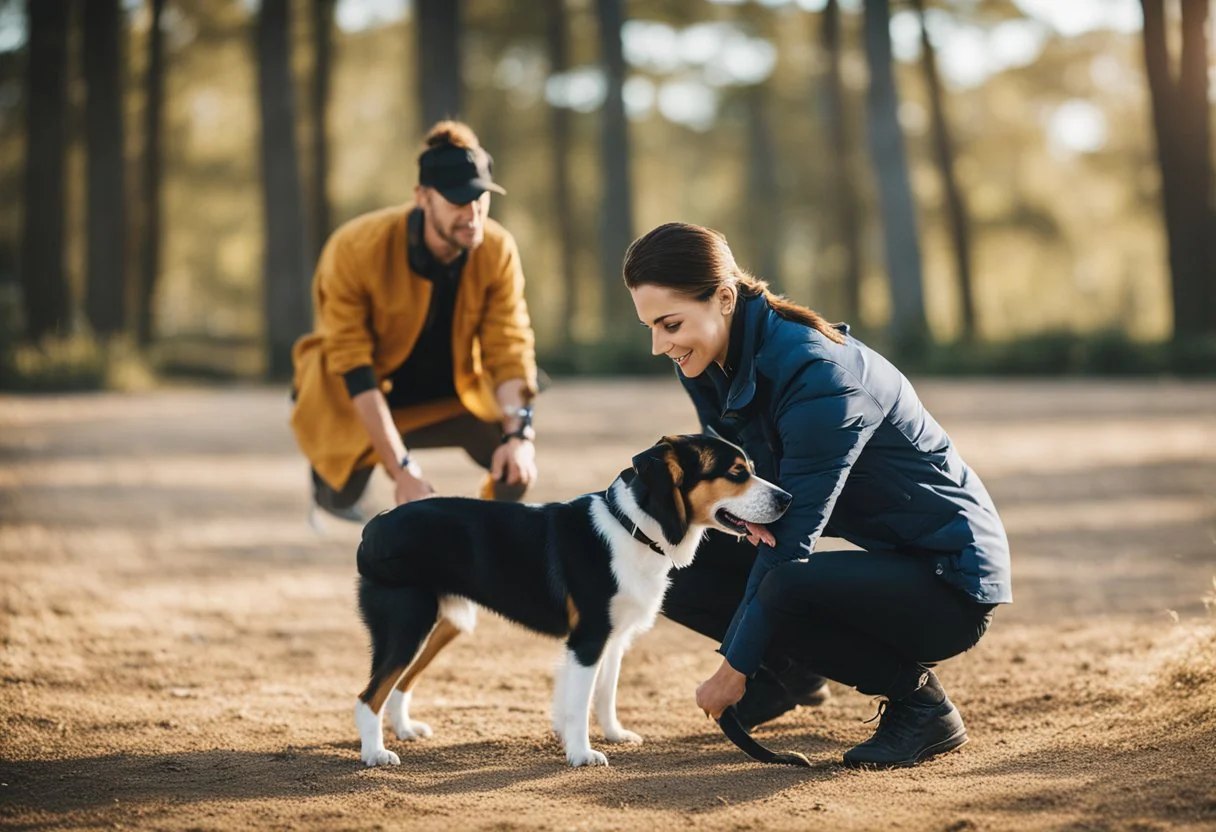
Implementation
Implementing behavioral modification requires a structured approach. Start with low-intensity exposures to triggers and gradually increase as your dog becomes more comfortable. Consistent reinforcement and patience are crucial for success.
Monitoring and Adjusting Techniques
Regularly monitor your dog’s progress and adjust techniques as needed. Keep detailed records of training sessions and outcomes to identify what works best for your dog. Flexibility and adaptability in your approach will ensure continued progress and success.
Using Clicker Training
Basics of Clicker Training
Clicker training uses a small device that makes a clicking sound to mark desired behaviors. The click is immediately followed by a reward, creating a clear connection between the behavior and the positive outcome. This method is highly effective for precise training.
Benefits
Clicker training provides clear and consistent communication, making it easier for your dog to understand what is expected. It is a positive and non-invasive method that can be used for a variety of behaviors and is especially effective for detailed or complex tasks.
Step-by-Step Guide
To start clicker training, introduce the clicker to your dog by clicking and immediately giving a treat. Once your dog associates the click with a reward, use the clicker to mark desired behaviors and follow with a treat. Gradually increase the difficulty of tasks while maintaining consistent reinforcement.
Building a Positive Home Environment
Creating a Calm Atmosphere
A calm home environment reduces stress and promotes positive behaviors. Establish routines and minimize chaos. Provide a designated safe space where your dog can retreat when feeling overwhelmed.
Providing Enrichment
Enrichment activities such as puzzle toys, interactive games, and regular exercise keep your dog mentally and physically stimulated. These activities reduce boredom and frustration, which can lead to aggressive behaviors.
Ensuring Safety
Safety is paramount in managing aggression. Use barriers, gates, or crates to control interactions with potential triggers. Ensure that your dog is always supervised in situations where aggression is likely to occur. Providing a safe and controlled environment helps manage and reduce aggressive behaviors.
Case Studies and Success Stories
Real-Life Examples
Real-life examples of dogs overcoming aggression through training can provide inspiration and practical insights. These stories often involve a combination of techniques, patience, and persistence. Learning from these examples can help guide your approach to training your dog.
Lessons Learned
Success stories highlight important lessons, such as the importance of consistency, the effectiveness of positive reinforcement, and the need for patience. They also demonstrate that with the right approach, even severe aggression can be managed and reduced.
Inspirational Stories
Inspirational stories of dogs transforming from aggressive to well-behaved can provide hope and motivation. These stories showcase the potential for positive change and reinforce the importance of dedication and commitment in training.
Addressing Aggression Towards Other Dogs
Recognizing Dog-Dog Aggression
Dog-dog aggression can stem from various causes, including fear, lack of socialization, or territorial behavior. Recognizing the signs, such as growling, lunging, or stiff body posture, helps you intervene early and manage the behavior effectively.
Techniques to Manage
Managing dog-dog aggression involves controlled exposure, positive reinforcement, and desensitization. Gradually introduce your dog to other dogs in a controlled setting, rewarding calm behavior and slowly reducing the distance between them.
Socialization Strategies
Socialization strategies for dog-dog aggression include group training classes, supervised playdates, and gradual introductions to new dogs. Positive experiences with other dogs help build your dog’s confidence and reduce aggressive tendencies.
Aggression Towards Humans
Understanding Human-Directed Aggression
Human-directed aggression can be particularly concerning. Understanding the root causes, such as fear, territorial behavior, or protective instincts, is essential for addressing this type of aggression. A thorough assessment helps identify triggers and develop appropriate training strategies.

Safety Measures
Safety measures are crucial when dealing with human-directed aggression. Use barriers, muzzles, and supervision to prevent incidents. Ensure that all interactions are controlled and positive, reducing the risk of aggression and building trust.
Training Techniques
Training techniques for human-directed aggression include desensitization, counter-conditioning, and positive reinforcement. Gradual exposure to triggers, paired with positive outcomes, helps reduce fear and aggressive responses. Consistent training and patience are key to success.
Emergency Situations
Handling Aggressive Outbursts
Handling aggressive outbursts requires calm and decisive action. Avoid physical confrontation and use barriers or distractions to diffuse the situation. Ensure the safety of all involved and seek professional help if needed.
Safety Protocols
Establish safety protocols for managing aggression, such as having a designated safe space, using muzzles, and ensuring that all family members are aware of how to handle aggressive behaviors. Consistent protocols help prevent incidents and ensure a safe environment.
When to Seek Immediate Help
Seek immediate help if your dog’s aggression poses a danger to others or if you are unable to manage the behavior on your own. Professional intervention can provide the necessary support and guidance to address severe aggression effectively.
Incorporating Play in Training
Benefits of Play
Play is an essential part of training, providing mental and physical stimulation. It strengthens the bond between you and your dog, reduces stress, and promotes positive behaviors. Incorporating play into training sessions makes learning fun and engaging.
Play-Based Training Techniques
Use play-based training techniques to reinforce commands and desired behaviors. For example, use a favorite toy as a reward for following a command. Incorporating games like fetch or tug-of-war into training sessions keeps your dog motivated and engaged.
Ensuring Safe Play
Ensure that play sessions are safe and controlled. Monitor your dog’s behavior and intervene if play becomes too rough or if signs of aggression appear. Providing structured and positive play experiences helps reinforce good behavior and build trust.
FAQs
What are the common signs of aggression in dogs?
Common signs of aggression include growling, barking, lunging, snapping, and biting. Subtle signs such as stiff body posture, intense staring, and raised hackles can also indicate aggression.
How can I safely manage my dog’s aggression towards strangers?
Manage aggression towards strangers by gradually desensitizing your dog to new people, using positive reinforcement to reward calm behavior, and ensuring that interactions are controlled and positive. Consider seeking professional help if needed.
Can aggressive behavior in dogs be cured?
While some aggressive behaviors can be significantly reduced or managed, it’s important to understand that complete “cure” may not be possible in all cases. Consistent training and management can lead to significant improvements and safer interactions.
What should I do if my dog shows signs of aggression towards family members?
If your dog shows aggression towards family members, seek professional help immediately. A behaviorist or trainer can assess the situation, identify triggers, and develop a customized training plan to address the behavior safely and effectively.
Is it safe to use a muzzle for an aggressive dog?
Using a muzzle can be safe and effective for managing aggression, especially in situations where safety is a concern. Ensure the muzzle fits properly and allows your dog to pant and drink water. Use the muzzle as a temporary tool while working on behavior modification.
How can I prevent my puppy from developing aggressive behaviors?
Prevent aggression in puppies by focusing on early socialization, positive reinforcement training, and building positive associations with various people, animals, and environments. Consistent training and exposure to positive experiences help prevent the development of aggressive behaviors.





















